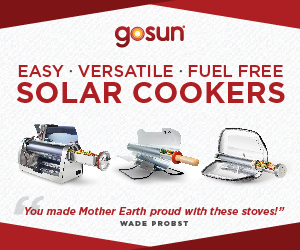- HOME
- Water Storage Basics
- How to Store Water
How to Store Water —
Containers & Myths
 How to Store Water — Containers & Myths: There are many container sizes available, so there should be no excuses for not storing water.
How to Store Water — Containers & Myths: There are many container sizes available, so there should be no excuses for not storing water.Water storage is THE MOST important preparation we can make. Definitely food is important, but we need water to cook that food, water to drink, clean, and to grow our food.
Invest in emergency food storage now and enjoy peace of mind for the next 25 years. Don't miss out on the savings!
In some areas, water for outside use is not fit to drink. Ours comes from an irrigation source, and the inside tap water comes from a potable source.
So check the source of your outside water before filling big barrels for storage — unless you want to purify it before drinking.
Water Storage Container Sizes
Food grade, BPA-free, water storage containers come in such a variety of sizes that finding the size that works for your storage space should not be a problem.
There are many container sizes available, so there should be no excuses for not storing water. You can buy a 250 gallon container or you can stash 5 gallon (or smaller) containers in closets and under beds.
 2.5-Gallon Fold-A-Carrier Collapsible Water Container
2.5-Gallon Fold-A-Carrier Collapsible Water Container 5-Gallon Water Container - Collapsible
5-Gallon Water Container - Collapsible 5-Gallon Water Container - Stackable
5-Gallon Water Container - StackableCollapsible containers that hold 2.5 and 5 gallons and are great for 72-hour kits and camping. The 5-gallon size that is stackable and, 3.5-gallon water bricks that can stack - well, as high as you dare.
 14-Gallon WaterBrick Storage Kit
14-Gallon WaterBrick Storage Kit 55-Gallon Water Barrel
55-Gallon Water Barrel 500-Gallon Water Tank
500-Gallon Water TankIf you're REALLY serious about storing lots of water, there are containers such as the 15, 30, and 55-gallon barrels, 160, 250, 320, and 500 gallon tanks (pictured above).
No Room to Store More Water?
Here are some creative suggestions: (as seen on Amazon)
Water Storage Myths:
MYTH #1 - Treat your water before storing it.
FACT - If regular tap water is used, there is no need to treat the water before storage. All culinary water is chlorinated, therefore, safe to fill containers right from the tap. (Qualification: I can only vouch for water in the U.S. - I am not familiar with water treatment in other countries.)
MYTH #2 - Water must be rotated every 6 months to a year.
FACT - Why? What a lot of trouble that is. Water is water is water. This doesn't mean you shouldn't purify the water if needed, but water doesn't "spoil" like food might. It is always water and can be purified by heating (see next myth), iodine drops, oxy-stabile drops, or by using some type of filtering device. If you can't purify it enough for drinking water, use it to flush toilets or water the garden.
MYTH #3 - Water must be boiled for 10 minutes to purify it.
FACT - Water only needs to be heated to ~160 degrees for 30 minutes or 185 degrees for only 3 minutes. This will kill all pathogens - even at high altitudes. (Keep in mind that heating water for a long period of time will use your fuel quickly and you may only have a limited supply of that. Consider using a solar oven for this purpose if you must heat water to purify it.)
MYTH #4 - Don’t reuse soda pop, juice bottles, or milk jugs for water storage. They leach chemicals.
FACT - The FDA requires that plastic used for juices or soda pop be food grade and therefore must be rated "PETE" or "PET". The theory is that a food grade plastic container rated "PETE/PET" is safer when exposed to heat. However, the breakdown of plastics or leaching of chemicals into foods only occurs under constant exposure to 80 degrees or more.
Milk jugs, on the other hand, are not suitable for long-term water storage use. Why? According to FEMA: "If you decide to re-use plastic storage containers, choose two-liter plastic soft drink bottles - not plastic jugs or cardboard containers that have had milk or juice in them. The reason is that milk protein or fruit sugars cannot be adequately removed from these containers and provide an environment for bacterial growth when water is stored in them."
Having said that, it’s perfectly safe to use other plastic containers which have a “PET or PETE” classification so long as they are not washed and used repeatedly. Use up the soda pop or juice, clean thoroughly, and then fill it with tap water. Store them in a cool place. Reusing liter and gallon juice and soda bottles is definitely better than having no water storage but check the rating/classification of the plastic.

















